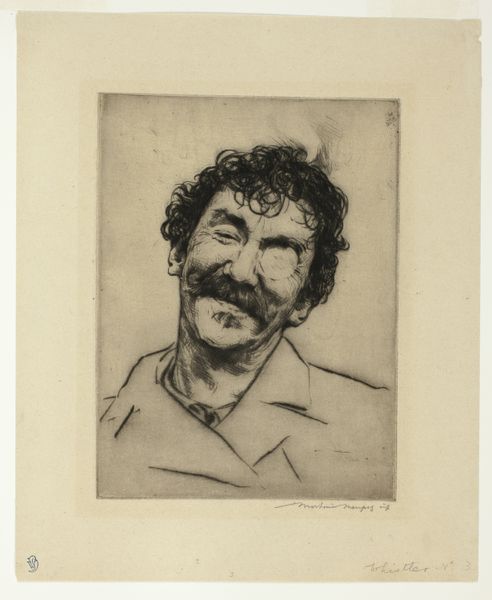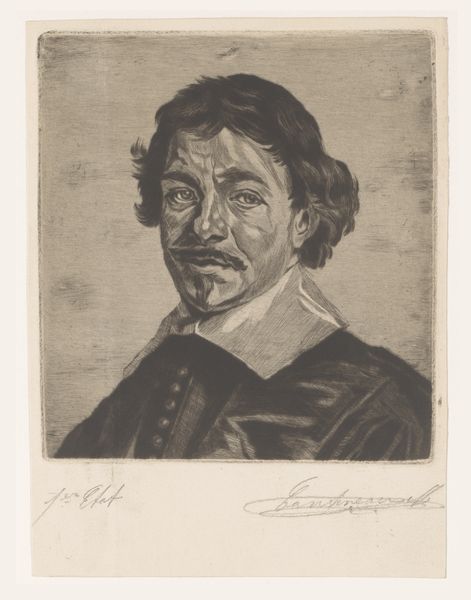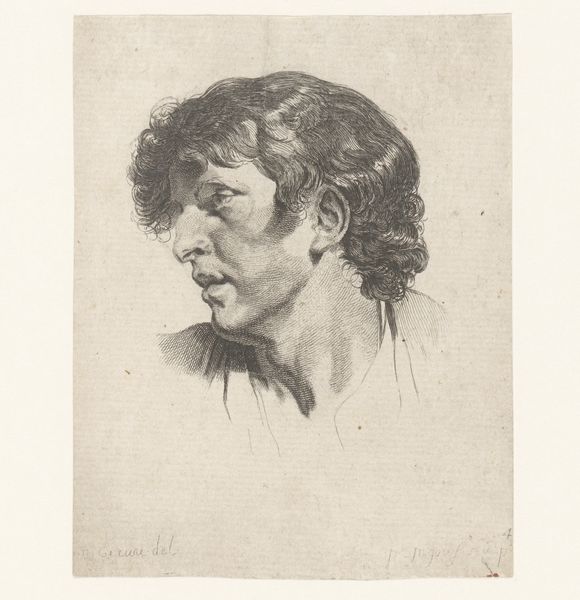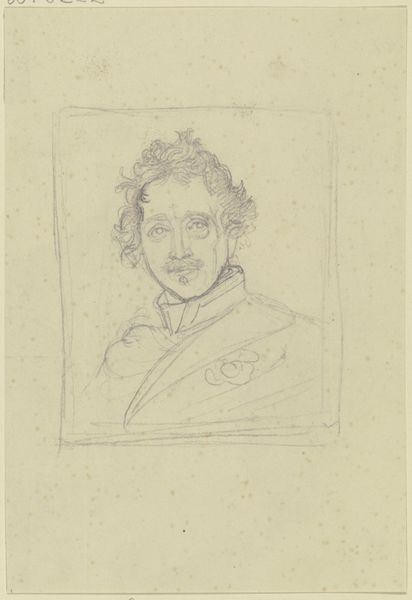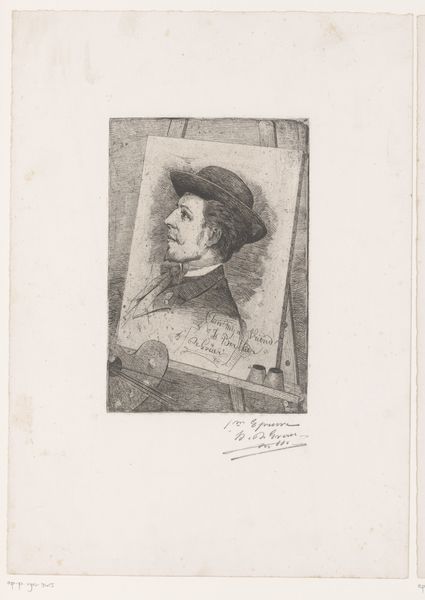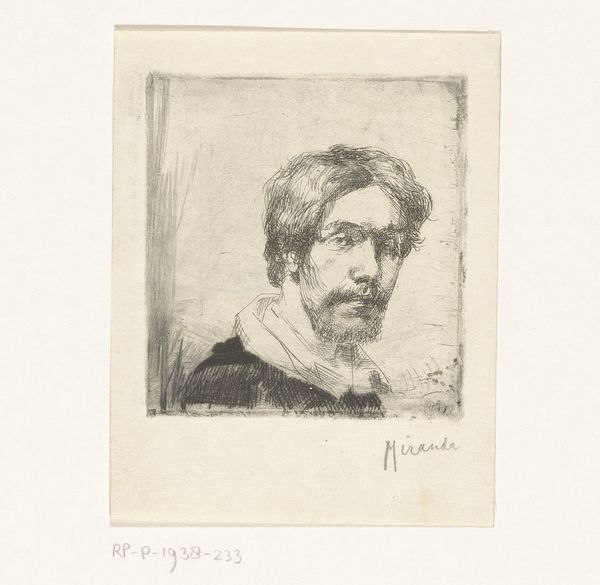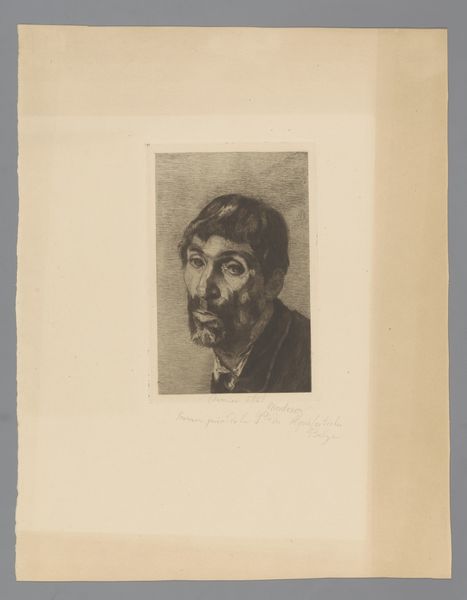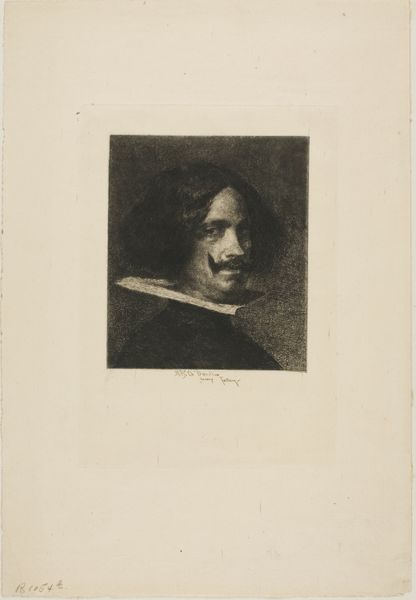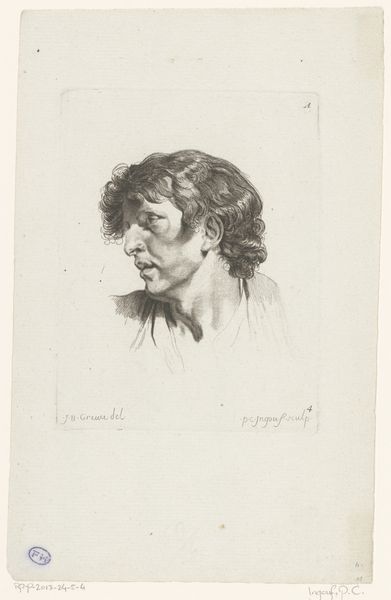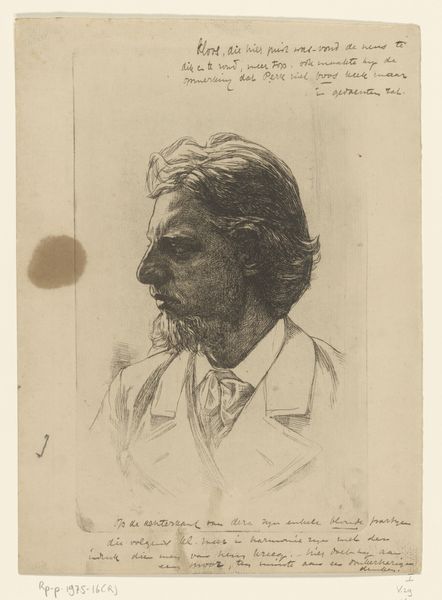
Dimensions: 184 × 137 mm (image/plate); 276 × 238 mm (sheet)
Copyright: Public Domain
Curator: Here we have Mortimer Menpes' "Whistler no. 2," an etching on paper, dating from 1902-1903. It resides here at the Art Institute of Chicago. What’s your immediate reaction to it? Editor: The starkness of the image is striking. The detail around the face, contrasted with the simple lines of the coat… it really draws the eye. There is also the gaze: evasive, as if captured in a private moment. Curator: Indeed. Menpes, having been a student and later a friend of Whistler, is using the etching technique to engage with Whistler's own explorations in printmaking. He is paying homage, yet carving his own niche through distinct execution. Consider the Victorian print market at the time, it shows a deep cultural interest in capturing likeness through industrial processes. Editor: So, the means of production, the etching itself, becomes part of the story? Fascinating. For me, the beauty lies in the formal tension – the subject’s face occupying the central picture plane versus his turn away from us as viewers. It suggests a sort of internal struggle. And his gaze is partially obscured by that monocle. Curator: The monocle suggests a social class but also affects how we percieve the artistic practice itself, doesn’t it? Menpes, like many artists, was grappling with questions of artistic integrity and commercial viability. He carefully negotiates both. The choice of etching as a reproductive medium brings these contradictions to the fore, highlighting concerns with distribution and access. Editor: And think about the line quality. The controlled cross-hatching, particularly around the facial features, versus the lighter, almost wispy lines that define the suit. It’s creating depth and shadow through the conscious arrangement of these elements. Curator: Right. It reflects the artistic networks operating during this period. Collaboration was essential to create, display and market artworks, and the print serves to mediate across these interests, especially as a reproductive and accessible format. Editor: I am left reflecting on the emotional impact of the print: how it can capture both the essence of the sitter but also prompt an interaction. A wonderful paradox captured. Curator: It truly captures that duality - the tension between artistic vision and a material culture. Very perceptive.
Comments
No comments
Be the first to comment and join the conversation on the ultimate creative platform.
